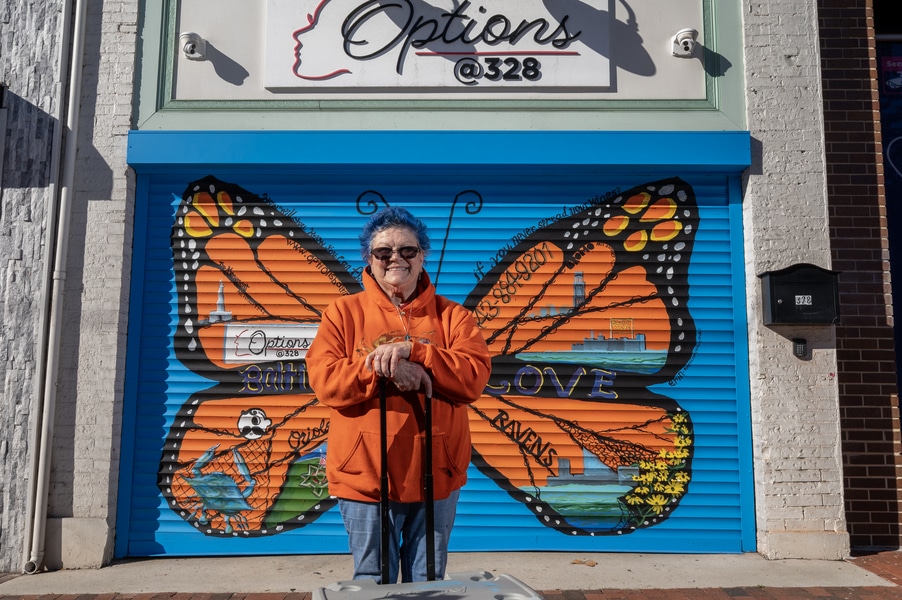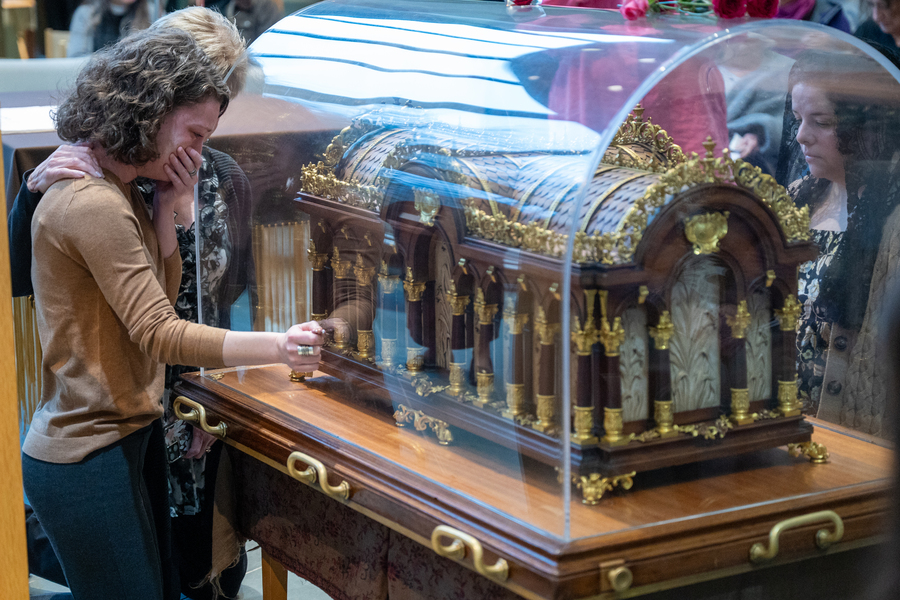The judge overseeing the Archdiocese of Baltimore’s Chapter 11 bankruptcy reorganization case issued an order May 2 that will allow those who filed claims in the case to also file lawsuits against the archdiocese and affiliated entities in order to preserve their rights under an amendment this year to the Maryland Child Victims Act.
Under bankruptcy law and pursuant to earlier rulings, all such filings were put on an automatic stay, or hold, while the reorganization process, which began in September 2023, is underway.
The 2025 amendment to the CVA, passed by the General Assembly and signed by Gov. Wes Moore, reduces the cap for civil damages in cases of sexual abuse of a minor from $890,000 for public institutions to $400,000, and for individuals or private institutions – such as parishes, churches and private schools – the CVA reduces the cap on non-economic damages, such as for pain and suffering, from $1.5 million to $700,000. The amendment also clarified that the limit applies per claimant versus per incident. The new caps apply to suits filed after May 31, 2025.
In light of the changes, the Unsecured Creditors Committee, which represents all the victim-survivors in the in the Chapter 11 case, filed a motion asking the court to allow victims to file a lawsuit outside the bankruptcy process, or to allow the filing of a proof of claim in the bankruptcy to count as though a civil lawsuit had been filed at the same time.
The survivors are concerned that if the bankruptcy case does not come to a settlement and they don’t receive compensation through that process, they will have lost their chance to file a claim before the deadline for the $1.5 million cap.
The motion from the creditors committee asked the court to decide that having filed a claim in the bankruptcy case counts as an “action” in terms of filing before May 31, 2025, or alternatively, the creditors committee asked for permission to file lawsuits in state court.
Judge Michelle M. Harner granted a modified form of the alternative relief requested. The judge will allow survivors to file a claim, even though the automatic stay in the bankruptcy case would normally not allow that.
During a court hearing May 1 conducted via teleconference, Harner acknowledged that the goal of the process is to provide a global resolution because it can take care of all parties – the archdiocese as the debtor; the unsecured creditors and victims; and insurance companies that provided coverage for parishes, schools and the archdiocese at certain times.
Noting that she wants to ensure fairness for all in the process, Harner said, “I have no intention of letting any party use a bankruptcy case, including this one, as both a shield and a sword.”
She also said, “The Debtor simply cannot dedicate the time and resources needed to participate in the Court-ordered mediation process in this case and confirm a Chapter 11 plan if it is also litigating hundreds of lawsuits in nonbankruptcy courts. The Debtor and others involved in this case have recognized the Debtor’s objective of achieving a global resolution of all claims for the benefit of all parties, which is still a viable objective at this time.
“Moreover, and as concerning to the Court, that litigation may significantly deplete the Debtor’s General Insurance Program and the assets otherwise available to pay all Survivors, as opposed to only those who reach the assets first,” Harner said.
The May 2 order modifies the automatic stay, or pause, on lawsuits regarding the archdiocese and affiliated entities “solely to the extent necessary to allow individuals to commence an action against the Debtor and/or any Covered Party by filing and serving a complaint for child sexual abuse claims under Maryland law on or before May 31, 2025.”
The order also notes that if any party seeking to file an action against an entity other than the debtor or a covered party, may provide the names of the intended defendants to counsel for the archdiocese, and counsel for the archdiocese must notify the claimant within two business days of whether the intended defendants are covered by archdiocesan insurance policies. This is to help those victim-survivors ensure they can file a claim appropriately.
In a response to the creditors committee’s motion, the archdiocese’s lawyers noted that of the hundreds of proofs of claims filed in the case, several have no connection to the archdiocese. Included in the list are allegations regarding a church in Maine, a training school in Michigan, a YMCA in Illinois, other secular sites and several churches of other Christian denominations.
Christian Kendzierski, executive director of communications for the archdiocese, said, “The Archdiocese of Baltimore notes that the passage of the 2023 Child Victims Act led to its filing of Chapter 11 reorganization with the dual goal of compensating victim-survivors while continuing its mission. Now, the State of Maryland has recently passed a new law aimed at minimizing the financial impact of the CVA.
“Friday’s decision by Judge Harner is a result of the changes to the CVA by the 2025 law. It does not, however, change the archdiocese’s commitment to working in good faith with all parties cooperatively and as expeditiously as possible toward the achievement of our shared goals,” he said.
Marie T. Reilly, a bankruptcy law expert and professor at Penn State Law at Penn State University, said there are differences between a proof of claim in a bankruptcy case and filing a claim in civil court. Victims can file a proof of claim by themselves, but civil claims must be signed by a lawyer who acknowledges he or she has done some due diligence to confirm the facts alleged in the complaint.
“The proof of claim process is very streamlined,” she told the Catholic Review.
She said she believes Harner’s decision is right, and not surprising.
Reilly noted that the court did not decide in the order whether filing in the bankruptcy case would count as an action in Maryland because that’s a matter of state law, not bankruptcy law, which is a federal process. The judge also did not decide if a proof of claim would toll, or stop the clock, on cases regarding the May 31 filing deadline.
However, Reilly noted, Harner’s order said she would not leave victims’ counsel with no way to protect their clients’ interests. The law professor said that means that victims and their attorneys have to follow the process for completing the complaint process under state law. Harner lifted the automatic stay under her earlier rulings in the bankruptcy case “solely to permit this one activity, which everyone agrees is the commencement of an action under Maryland law,” Reilly said.
She said she doesn’t think any of the parties to the Chapter 11 process – the debtor, the creditors committee or the insurers – got everything they wanted in this order. “The order isn’t quite as explicit as the debtor wanted or as explicit as the insurers wanted as to whether there’s anything else (victims) can do.” But the victims’ attorneys did not get a ruling that proofs of claim are sufficient for an “action” according to Maryland law, so now they must file a claim if they have to pursue action later.
“(Harner) just says I’m only lifting this stay to permit you to commence an action, which means just to basically file the complaint, and then you’ve got to stop. There’s not going to be any discovery. There’s not going to be anything else,” Reilly said.
The 2023 CVA initially seemed to target the Catholic Church, and specifically the Archdiocese of Baltimore, after a 2023 report by the Maryland Attorney General based on a four-year investigation. In a statement after the passage of the amendment to the CVA this year, the Maryland Catholic Conference pointed out: “The largest employer of abusers in the State of Maryland appears to be the State of Maryland itself.”
Reilly said that includes public schools but also many victims in foster care and juvenile detention. She noted that a report on the fiscal impact of an expansion of the statute of limitations in California predicts an impact on local government jurisdictions of billions of dollars, with one county alone projected to be at risk for more than $3 billion.
She said in such cases – both public and private – there is a benefit to processing claims together as will be done in the Chapter 11 process. “The standard for the mechanisms for vetting claim validity and also claim value are very different in a bankruptcy case than what they would be in state court,” Reilly said.
She said in civil courts, a claimant can sue the person who abused them but that alleging that the organization responsible for employing the alleged abuser, such as a church or school, requires proof of “organizational negligence.” However, proof of claim forms in the bankruptcy case don’t require such information.
Reilly called the judge’s order a sensible compromise. “The judge decided what she had to decide to protect the bankruptcy process and also to provide a way for claimants to protect their rights under the amendment to the Maryland Child Victims Act. It’s a tough situation,” she said.
Another development in the case emerged when the U.S. Trustee in the case, Hugh M. Bernstein, filed a notice May 7 from the Executive Office of U.S. Trustees that noted that Berkely Research Group, which maintains data for at least 10 diocesan bankruptcy proceedings, experienced a data breach that may have revealed personal information about victim-survivors in the cases.
The notice included 11 detailed questions for BRG about the breach and its responsibility to have kept the confidential data secure.
Email Christopher Gunty at editor@CatholicReview.org
Read More Local News
Copyright © 2025 Catholic Review Media






